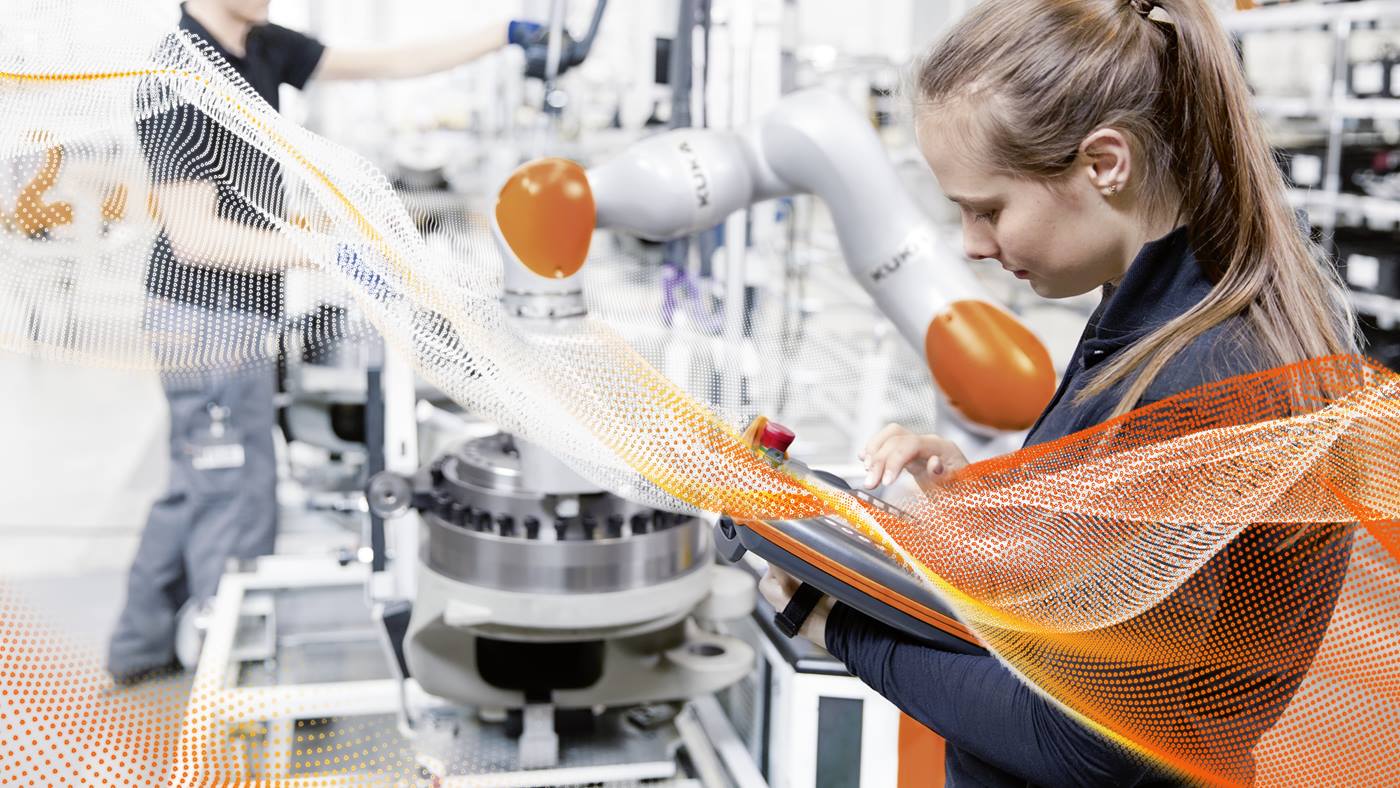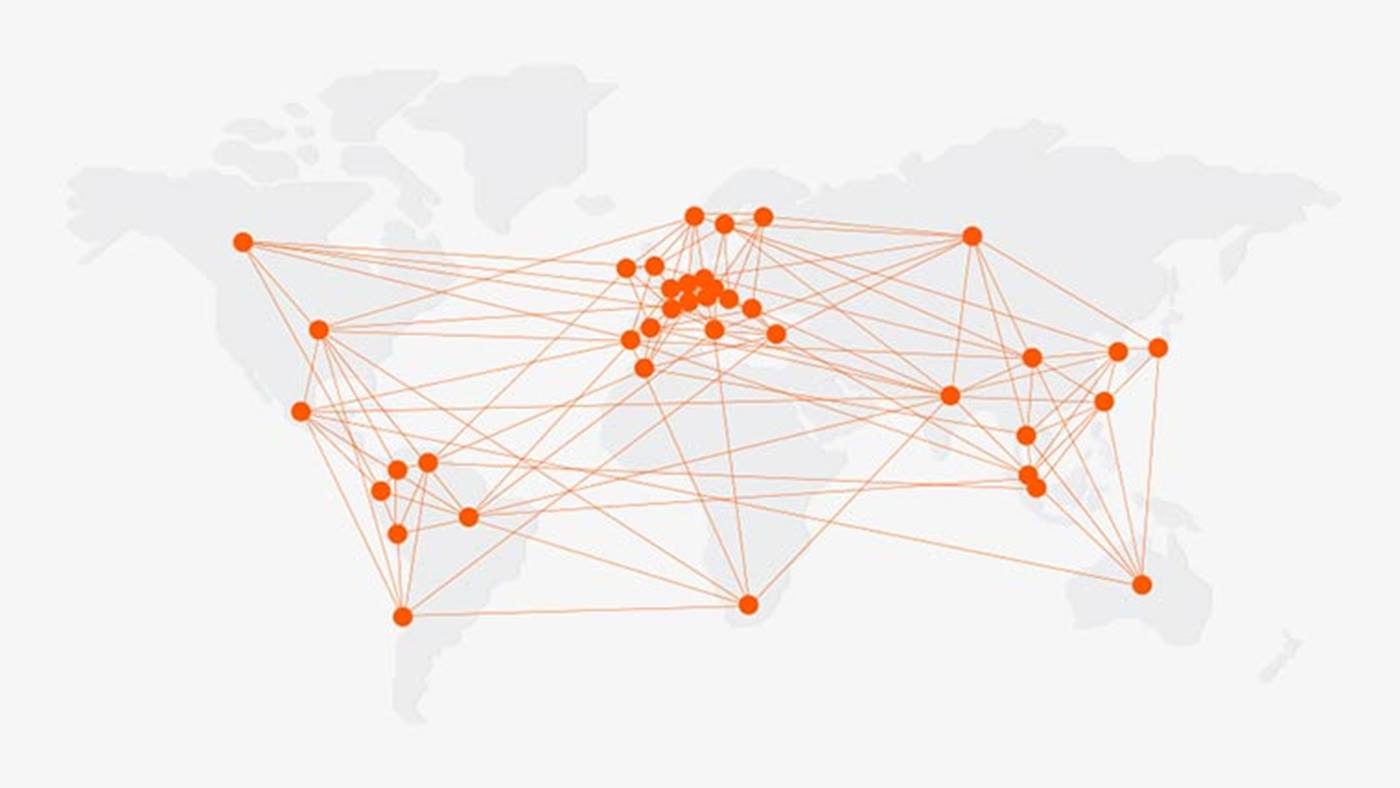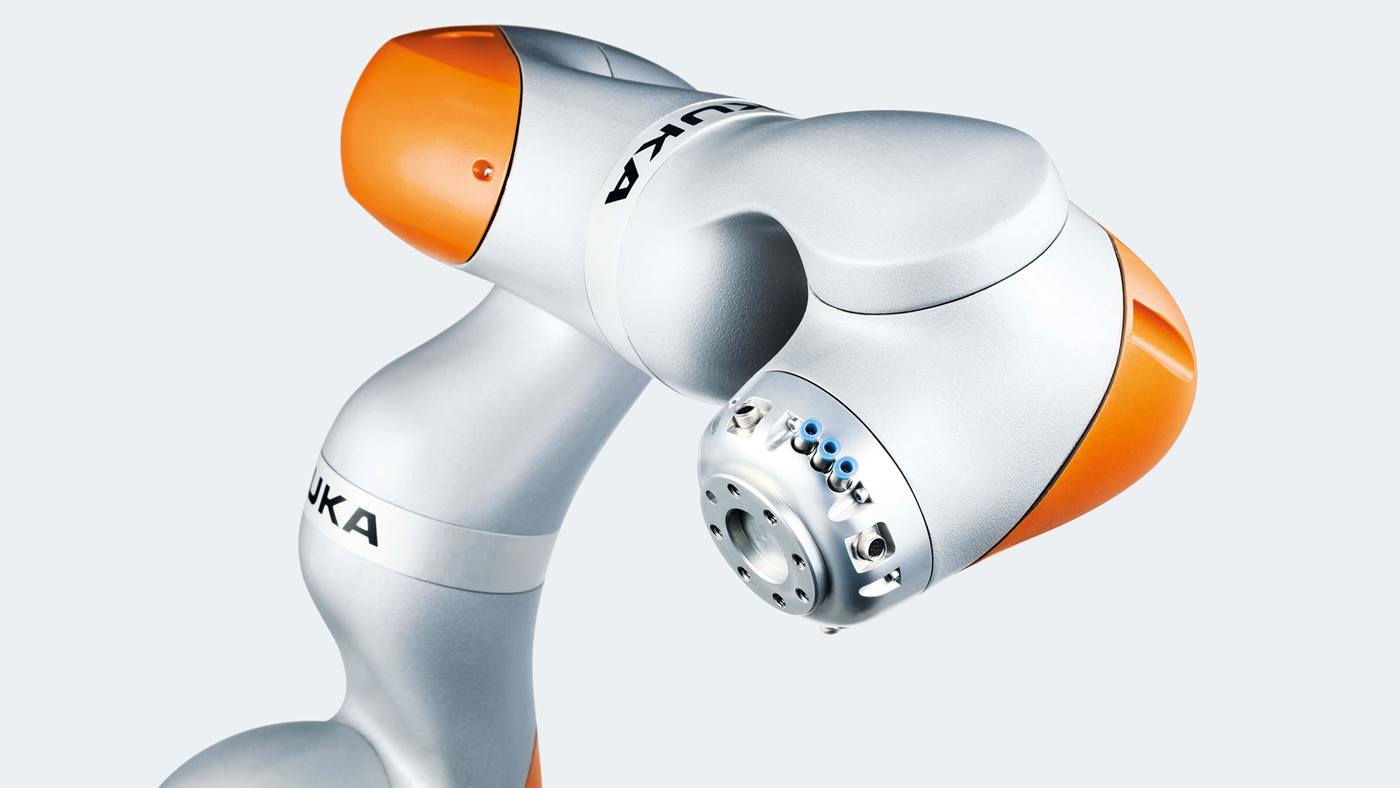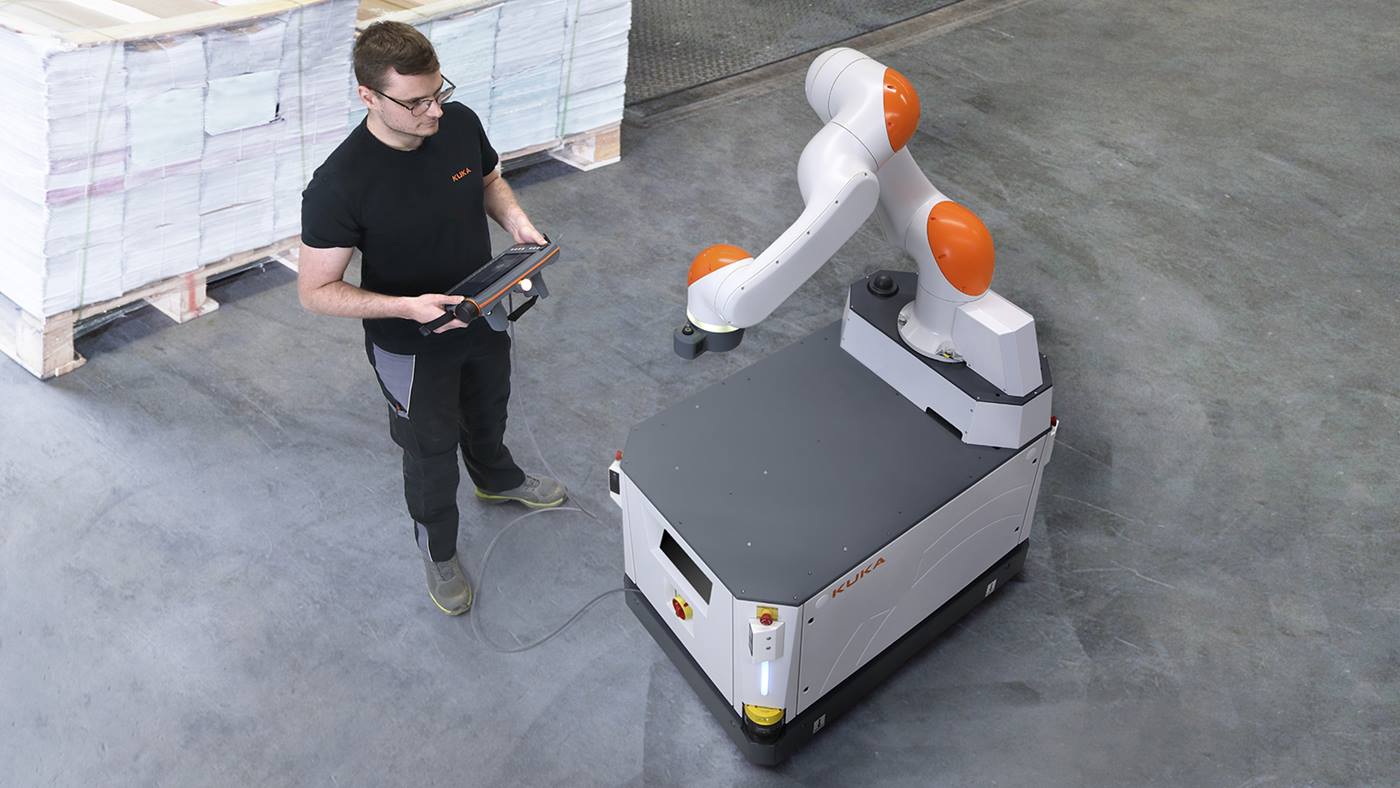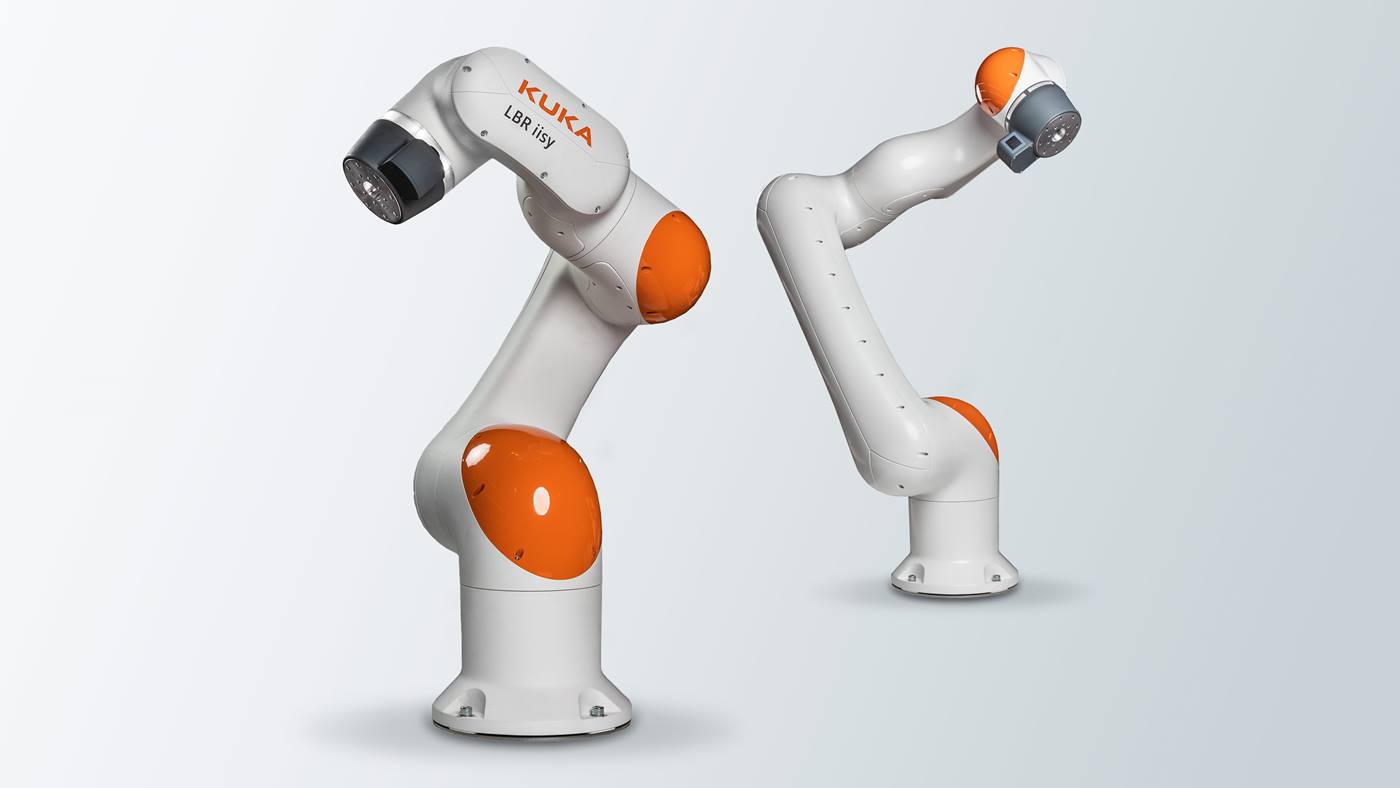Increasing efficiency on the assembly line
The assembly lines in the production halls of automotive manufacturers move partially assembled car bodies along the processing lines, while workers assemble other parts or check quality features in cycle time operation. The speed of the assembly line is adapted to the human pace so that assembly tasks or reworking of components can be carried out on the running line. To increase efficiency on the assembly line, human and robot must cooperate. The sensitive lightweight robot KUKA LBR iiwa is ideally qualified for this purpose, since it meets the highest safety requirements and can react immediately to any touch by the worker and adapt to the situation.







